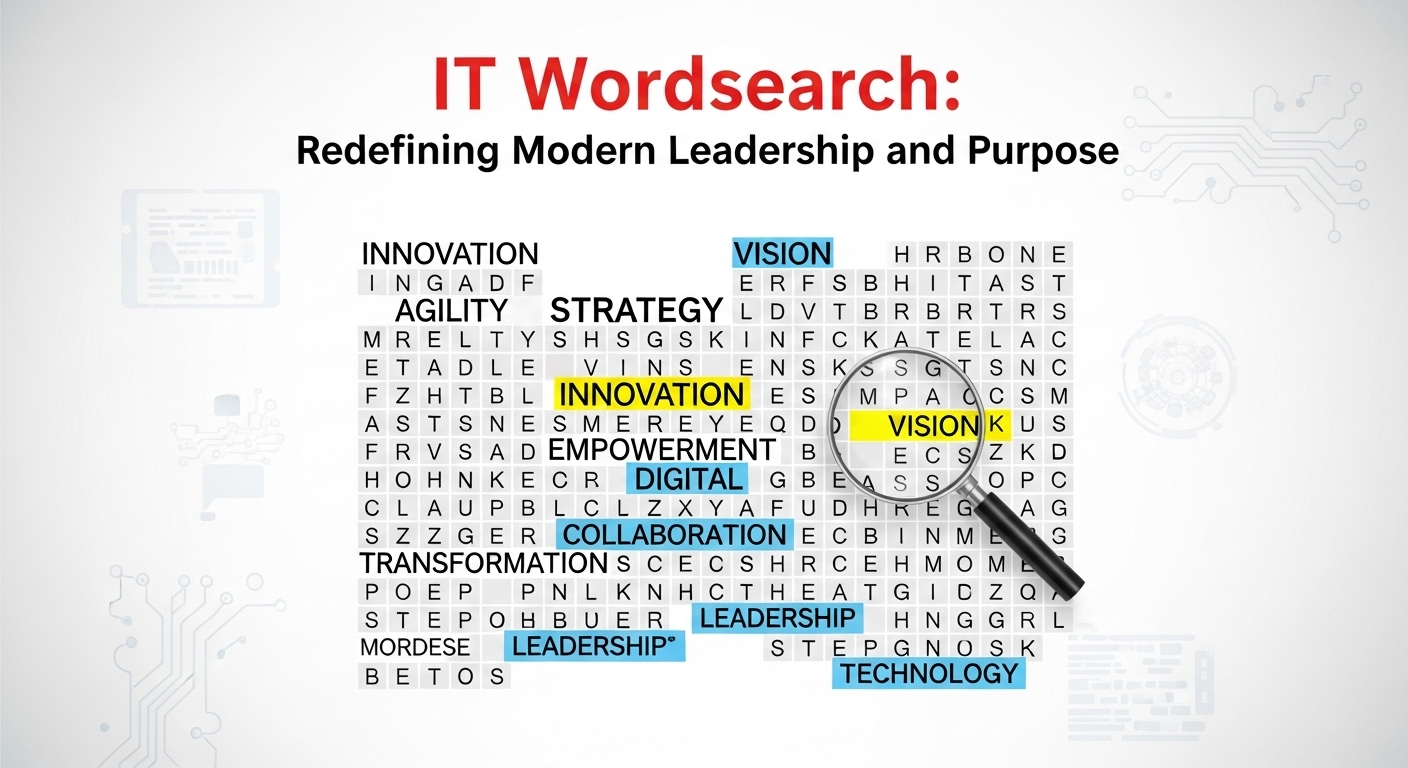BUSINESS
Boost Your Sales: Secrets of High-Converting Shopify Designs in 2024

In the wake of recent advancements in digital marketing and the online shopping landscape, commercial activities around the globe have witnessed a paradigm shift. People now love shopping from the comfort of their cozy homes and prefer things getting delivered to their doorsteps. So, some aspects in your Shopify website can trigger your sales, turning purchases into a whole experience for your customers and making them loyal to your brand.
1. Mobile-First Design
With most online shoppers using mobile devices, a mobile-first design is no longer optional but necessary. Shopify themes in 2024 are optimized for mobile devices, ensuring seamless navigation and a smooth shopping experience. A responsive shopify website design adjusts automatically to different screen sizes, maintaining usability and aesthetics. Key elements include touch-friendly buttons, simplified navigation, and fast loading times. Ensuring your store looks and functions perfectly on smartphones and tablets can dramatically increase conversion rates.
2. Intuitive Navigation
Ease of navigation is crucial for retaining visitors. The pillars of intuitive navigation are a well-structured menu, clear categories, and an efficient search function. In 2024, mega menus will become increasingly popular, allowing customers to see a wide range of categories at a glance without feeling overwhelmed. Breadcrumbs and filters will also help users find exactly what they’re looking for without hassle. The goal is to make the shopping experience as effortless as possible, reducing the steps between landing on your site and completing a purchase.
3. High-Quality Visuals
High-quality images and videos are essential for effectively showcasing your products. In 2024, Shopify stores are leveraging advanced imaging technologies such as 3D product views and augmented reality (AR) to give customers a more interactive experience. These features allow shoppers to visualize products in their own space, making them more confident in purchasing decisions. Additionally, using high-resolution images and providing multiple angles of each product can help customers understand exactly what they are buying; further, it complements Shopify seo optimization, reducing returns and increasing satisfaction.
4. Personalization
Personalization is critical to creating a unique shopping experience that resonates with each customer. Shopify’s advanced algorithms can track customer behavior and preferences, allowing you to tailor product recommendations, offers, and content to individual users. In 2024, AI-driven personalization is more sophisticated, offering dynamic homepages that change based on the visitor’s history and preferences. This level of customization makes customers feel valued and understood, which can significantly boost conversion rates.
5. Trust Signals
Building trust is vital for converting visitors into buyers. Trust signals such as customer reviews, testimonials, and security badges reassure potential customers that your store is credible and reliable. In 2024, featuring user-generated content, such as photos and videos of customers using your products, adds authenticity and can enhance trust. Displaying clear return policies, contact information, and offering secure payment options further instills confidence in your brand.
6. Fast Loading Speeds
Page load speed is a critical factor in user experience and Shopify SEO optimizatin. Slow websites frustrate users and lead to higher bounce rates. Shopify’s infrastructure in 2024 supports faster loading times through optimized themes, image compression, and efficient coding practices. Utilizing Shopify’s built-in tools to monitor and enhance your store’s speed can prevent potential customers from leaving before even seeing your products.
7. Clear Call-to-Actions (CTAs)
Effective CTAs by shopify experts guide customers towards making a purchase. They should be strategically placed, clearly visible, and compelling. In 2024, the trend is towards personalized CTAs that adapt to the user’s journey on your site. For instance, a returning customer might see a CTA for a loyalty discount, while a new visitor might be encouraged to sign up for a newsletter with a special offer. These tailored approaches can significantly improve conversion rates by addressing the specific needs and motivations of different customer segments.
8. Simplified Checkout Process
A complicated checkout process is a major barrier to conversions. Streamlining your checkout process by minimizing the number of steps, offering guest checkout options, and integrating various payment methods can reduce cart abandonment rates. In 2024, one-click checkout options are becoming standard, providing a seamless and fast purchasing experience. Implementing features like auto-fill for address forms and progress indicators can further simplify the process, ensuring customers can complete their purchases with minimal friction.
9. Effective Use of Pop-ups
Pop-ups, when used correctly, can enhance user experience and drive conversions. In 2024, Shopify stores are leveraging smart pop-ups that appear at the right moment, such as exit-intent pop-ups offering discounts to prevent cart abandonment, or time-based pop-ups providing special offers after a user has spent a certain amount of time on a page. It’s important to ensure that pop-ups are not intrusive in a user friendly Shopify website design and provide genuine value to the customer.
10. Social Proof Integration
Social proof, including reviews, ratings, and social media mentions, influences purchasing decisions. Displaying recent purchases, customer testimonials, and influencer endorsements prominently on your site can build credibility and encourage new customers to buy. In 2024, integrating social proof into your Shopify store involves not just static reviews but also real-time data showing current trends and popular products, which can create a sense of urgency and community.
11. Omnichannel Experience
Providing a consistent shopping experience across multiple channels is essential in today’s retail landscape. Customers expect to seamlessly transition between online and offline interactions with your brand. Shopify’s integration capabilities in 2024 allow for smooth omnichannel experiences, ensuring that inventory, promotions, and customer data are synchronized across your website, social media, physical stores, and other platforms. This cohesive approach helps in retaining customers and increasing sales.
12. Analytics and Optimization
Continuous improvement is the key to long-term success. Utilizing Shopify’s analytics tools to track visitor behavior, sales data, and conversion rates helps you understand what works and what doesn’t. In 2024, advanced analytics and A/B testing are crucial for optimizing your store’s design and functionality. Regularly updating your site based on data-driven insights ensures that your store remains relevant and converts visitors into customers.
Conclusion!
Shopify is a literal revolution that has changed the dimensions of the modern shopping experience. Shopify is a whole new phenomenon in skyrocketing your sales irrespective of the potential of your products, yet some additional makeovers can further enhance your sales. Provided you ensure the implementation of the above-mentioned maneuvers, you will undoubtedly love the drastic rise in brand recognition and, ultimately, more sales.

BUSINESS
Common Legal Issues in Residential Real Estate and How to Address Them

Navigating residential real estate transactions can involve various legal challenges that homeowners and buyers should be aware of. Common issues include unclear property titles, zoning disputes, boundary disagreements, and contract misunderstandings. Addressing these matters proactively can prevent costly delays and protect all parties involved. Understanding the basics of real estate law helps individuals recognize potential pitfalls before they escalate into serious problems.
Engaging with professionals knowledgeable in real estate law can guide you in drafting contracts, resolving disputes, and ensuring compliance with local regulations. By seeking informed advice early, homeowners and buyers can reduce risk, streamline transactions, and safeguard their investments. Awareness and preparation are key to handling legal complexities effectively while maintaining confidence throughout the buying or selling process.
Title and Deed Fraud
Title fraud is a significant issue in which criminals transfer property ownership illegally by forging signatures or using other fraudulent means. This not only compromises ownership but may also leave you liable for debts or liens tied to your property. To protect your home, periodically monitor the status of your property title and consider using title lock services that can notify you of any unauthorized changes to your title. Title insurance, which most lenders require, also provides a crucial layer of protection for homeowners.
Undisclosed Property Defects
When selling property, sellers are legally obligated to disclose any known issues; however, some defects may remain hidden until after the sale has been completed. Commonly undisclosed issues include water damage, faulty wiring, and past pest infestations, which can result in significant costs for buyers. Buyers must conduct a thorough home inspection and scrutinize disclosure forms, maintaining clear communication with inspectors to document potential issues. If defects arise after the sale, buyers may have legal avenues for compensation or to rescind the contract.
Breach of Contract
Residential real estate deals are governed by contracts detailing every aspect of the transaction, from price and contingencies to required repairs and closing dates. Breaches can occur if any party fails to meet their obligations, for instance, by not repairing a leaky roof as promised or missing crucial deadlines. Preventing breaches begins with clear and precise language in contracts and diligent communication among all parties. Understanding residential real estate law is essential, as it provides the framework for enforcing agreements and resolving disputes. In the event of a potential contract violation, consulting with a real estate attorney can help explore remedies such as mediation, renegotiation, or pursuing damages through legal channels.
Financing and Mortgage Issues
Financing problems or misconceptions about mortgages, such as loan denials after an offer, misunderstandings about interest rates, and mistakes in documentation, can make a real estate transaction difficult. Before closing, buyers should maintain good credit, avoid making significant financial changes, and thoroughly understand their loan terms and conditions. To mitigate risks and prevent unforeseen issues, it is crucial to maintain open lines of communication with lenders, including documenting all conversations.
Zoning and Land Use Restrictions
Zoning laws regulate the use of properties, including structures, businesses, and fences. Ignoring local ordinances can lead to legal issues or the removal of modifications. Check the regulations on your city or county website and consult with planning officials before making changes to ensure compliance and avoid costly errors.
Homeowners Association (HOA) Disputes
Neighborhoods governed by HOAs come with additional rules and responsibilities. Disputes over landscaping, parking, noise, or architectural changes are common and can lead to fines or legal conflicts if not handled carefully. Before committing to a property in a managed community, scrutinize the HOA’s covenants, conditions, and restrictions (CC&Rs), and attend community meetings if possible. If you find yourself facing a dispute, approach your HOA board promptly and maintain a documented record of correspondence to facilitate quick and amicable resolutions.
Boundary and Survey Disputes
Accurate boundary identification is crucial for maintaining peaceful neighbor relationships and facilitating future transactions. Disputes may arise from misinterpreted property lines, encroachments, or unclear lot descriptions. Buyers should always order a fresh professional survey before closing and review all records for discrepancies. Resolving boundary disagreements amicably is ideal, but legal recourse may be necessary if talks fail. County assessor offices and historical deed records often provide valuable documentation during such disputes.
Conclusion
By proactively identifying and addressing these common legal issues in residential real estate, you reduce the likelihood of disputes and financial setbacks. Relying on professionals, including attorneys, inspectors, and local government officials, is crucial to navigating the process safely. Make informed decisions, keep diligent records, and stay current with your obligations to ensure a successful and secure real estate experience.
BUSINESS
The Power of Peace of Mind: Why Insurance Is an Investment, Not an Expense

Understanding Insurance as an Investment
Understanding insurance as an investment means recognizing that certain policies serve a dual purpose: offering financial protection and building long-term value. Unlike savings accounts, these policies create a safety net and accumulate cash value, like life insurance growing through interest or dividends, providing coverage and wealth buildup. Viewing insurance this way helps individuals choose policies aligned with their financial goals and risk tolerance. Even standard policies, such as auto insurance, contribute to financial planning by covering damages and liabilities, preventing major expenses that could affect budgets or investments. Recognizing insurance’s dual role as protection and potential investment allows for better financial stability and peace of mind.
Major Types of Insurance and Their Benefits
Each insurance type serves a specific purpose. Health insurance covers unexpected illnesses, providing lifesaving care when needed. Property and homeowner’s insurance help rebuild after fires or storms. Auto coverage protects your vehicle and passengers and fulfills legal requirements, shielding parties from losses. Policies can be customized with add-ons like identity theft or bundling car, house, or business liabilities to suit your needs. Home insurance is essential for homeowners, protecting against weather damage, theft, and liability, so you can rest easy. The right coverage considers your assets, lifestyle, and goals, building a safety net. When choosing insurance, look beyond premiums to the long-term impact of coverage.
The Economic Impact of Insurance on Communities
Insurance isn’t just about individual peace of mind; it fortifies entire communities. When people and businesses insure their property, health, and liabilities, they’re more likely to innovate, expand, and support local economies without the threat of catastrophic loss holding them back. In times of crisis, insurance payouts for rebuilding and recovery help stabilize neighborhoods and reduce the strain on public resources.
Economists have observed for a long time that insurance significantly supports entrepreneurship and investment in new ventures. Industries with good coverage tend to withstand economic downturns better and recover more quickly from unexpected shocks. Without the reassurance provided by insurance, growth and innovation would slow down considerably, and the potential risks might prevent significant advancements.
Integrating Insurance into Long-Term Financial Planning
Insurance should be a pillar of any sound financial plan. Start by assessing which risks could cause serious setbacks and match coverage types to those needs. For example, young families often prioritize life insurance for security, while property owners focus on home protection. Consistently reviewing policies ensures your protection evolves along with life changes, from family milestones to new business ventures.
Smart policyholders treat premiums as contributions toward future security—much like retirement savings or investments in education. This proactive mindset isn’t about compliance or mere obligation; it’s about wisely positioning yourself and your loved ones to weather whatever comes, while supporting the stability and prosperity of your broader community.
Conclusion
In today’s unpredictable world, the value of insurance extends far beyond a monthly bill. It is a critical investment, weaving together individual peace of mind with the collective strength of families, homeowners, and business owners. By embracing insurance as a strategic tool rather than an expense, you empower yourself to pursue your dreams and build a future fortified against life’s uncertainties.
Building your protection strategy now lays the groundwork for confidence, stability, and security—qualities that enrich not only your own life but also the broader community and economy. Make insurance a purposeful component of your financial plan and experience the freedom that comes from true peace of mind.
BUSINESS
IT Wordsearch: Redefining Modern Leadership and Purpose

In today’s rapidly evolving world, leadership is no longer defined solely by financial success or corporate expansion. The most influential leaders are those who integrate business excellence with social responsibility, building organizations that thrive while uplifting communities. One such emerging perspective in this landscape is IT wordsearch—a concept that symbolizes the search for meaning, alignment, and innovation in modern leadership.
This article explores how IT wordsearch represents more than a puzzle-like curiosity. It reflects a deeper leadership journey—one where purpose and performance align, where success is measured not only in profits but also in people, culture, and long-term impact.
What is IT Wordsearch?
At first glance, it wordsearch may sound like a simple activity: finding hidden words within a grid. Yet when applied to leadership and business, the phrase takes on a symbolic meaning. It suggests a process of discovery, alignment, and focus. Just as players search for hidden words, leaders must search for solutions, values, and strategies hidden within the complexity of today’s global challenges.
The idea resonates with professionals who believe that economic growth and positive social change are not mutually exclusive but deeply interconnected. Much like solving a wordsearch, success lies in recognizing patterns, connecting dots, and uncovering possibilities others may overlook.
A Leadership Philosophy Rooted in Discovery
At the heart of the it wordsearch philosophy is the belief that leadership is a continuous search for purpose. This approach emphasizes three core values:
- Empathy in leadership: Understanding the human side of business, from employees to customers.
- Sustainability: Ensuring long-term growth by balancing profitability with environmental and social responsibility.
- Collaboration: Building partnerships that amplify both business outcomes and community well-being.
This framework reflects a growing awareness that modern organizations do not exist in isolation. They are part of larger ecosystems where every decision has ripple effects. Leaders who embrace the it wordsearch mindset don’t just chase immediate wins—they uncover deeper value that sustains both business and society.
Bridging Business Growth with Social Impact
What makes the it wordsearch approach so powerful is its ability to link corporate success with community impact. Much like finding words hidden within a grid, leaders must look beyond the obvious to discover opportunities for shared growth.
Examples of this approach include:
- Workplace Culture: Designing inclusive, supportive environments that attract and retain diverse talent.
- Community Investment: Reinvesting resources into education, local initiatives, and social programs before they become urgent needs.
- Innovation for Good: Using technology to solve pressing challenges, from environmental sustainability to equitable access to services.
When these values are embedded into strategy, businesses create a virtuous cycle: strong companies nurture stronger communities, which in turn sustain future growth.
Influence in the Digital Age
The digital landscape has amplified the importance of acting with foresight. Just as a wordsearch reveals hidden connections, the digital world reveals opportunities for influence and innovation. Leaders today use platforms not only for visibility but also to inspire movements and conversations around responsible practices.
With it wordsearch as a guiding principle, leaders leverage digital tools to:
- Reach broad audiences with authentic messages.
- Engage younger generations who value transparency and inclusion.
- Inspire peers to adopt purpose-driven strategies.
In this sense, digital influence is no longer about self-promotion—it is about amplifying messages that shape industries and communities alike.
A Model for the Next Generation
The rise of it wordsearch as a metaphor for leadership aligns closely with the values of Millennials and Gen Z. Younger professionals increasingly seek role models who:
- Live authentically, aligning values with action.
- Promote diversity and equity, not as an afterthought but as a foundation.
- Think globally, addressing interconnected challenges such as climate change, inequality, and digital ethics.
These expectations highlight why it wordsearch resonates—it symbolizes the search for alignment in an often disjointed world. By embodying these principles, leaders position themselves not just as executives but as mentors and trailblazers.
Challenges in the Search
Like solving a difficult puzzle, applying the it wordsearch philosophy is not without challenges. Leaders face:
- Balancing short-term pressures with long-term commitments to purpose.
- Convincing traditional stakeholders of the measurable value of social responsibility.
- Navigating uncertainty in rapidly changing markets and technologies.
However, these challenges are also opportunities. Much like hidden words, solutions often lie just beneath the surface. Leaders who embrace curiosity and adaptability can turn obstacles into breakthroughs.
Why the Wordsearch Metaphor Matters
The metaphor of it wordsearch matters because it reflects the complexity of modern leadership. Success isn’t about finding a single answer; it’s about uncovering many interconnected solutions. A leader who can anticipate challenges, spot hidden opportunities, and align strategy with purpose is far better equipped to guide organizations through uncertainty.
This proactive mindset is essential in a world where reactive leadership often falls short. Waiting until challenges dominate headlines is too late. By searching for solutions early—before they are visible to all—leaders create lasting resilience.
Looking Ahead
As leadership continues to evolve, it wordsearch represents more than a clever metaphor. It is a call to action: to search for meaning, embrace complexity, and discover opportunities before they become urgent.
In a world where consumers, employees, and investors increasingly demand accountability, the leaders who succeed will be those who treat every challenge like a wordsearch puzzle—hidden with possibilities waiting to be uncovered.
The future belongs to leaders who see beyond profits, who connect performance with purpose, and who embrace the ongoing search for what truly matters. In the end, the most powerful leaders are those who uncover meaning not after the fact, but during the process—just as one finds words hidden in a puzzle grid.
-

 HEALTH2 years ago
HEALTH2 years agoIntegrating Semaglutide into Your Weight Loss Plan: A Practical Guide
-

 HOME IMPROVEMENT2 years ago
HOME IMPROVEMENT2 years agoHow to Choose the Perfect Neutral Area Rug for Every Room
-

 LAW1 year ago
LAW1 year agoTeenage Drivers and Car Accidents in California: Risks and Parental Liability
-

 LAW1 year ago
LAW1 year agoPost-Divorce Considerations in California: Modifications and Long-Term Planning
-

 CONSTRUCTION1 year ago
CONSTRUCTION1 year agoConstruction Site Safety Regulations in New York and Your Rights as a Worker
-

 HOME2 years ago
HOME2 years agoSandra Orlow: The Teen Model Who Captivated the Internet
-

 FINANCE1 year ago
FINANCE1 year agoDigital Asset Management in Florida Estate Planning
-

 LAW1 year ago
LAW1 year agoKentucky’s School Football: Concussions, Injuries, and Legal Options
